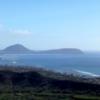You were quit right when you said about using the raid mirror for back up only. That is what I was thinking of. Not for storing data etc, only for the o/s and software files incase of any failures.
This is what you have Acronis for.
Think about this... if you raid two drives with just the OS and Programs, then basically, you give up these two drives for storing data. Also, according to the Raid Wiki, "a 2-disk RAID 1 array loses half of the total capacity that would have otherwise been available using both disks independently".
Don't get me wrong, I'm not saying don't run raid. It's just my opinion that with the tools you already have (Acronis), that raid is a waste for you. Not only in terms of disk usage, but also in terms of available motherboard drive allocations.
This is how I set up computers... based on two 320GB hard drives. These just happen to be the smallest I personally use, but it could easily apply to any drive size.
First DriveC = 25gb
D = 15gb
E = 20gb
F + G = split the rest... ~ 130gb each
C drive has my OS and Program files. With ample room for working on the desktop, handling cache files... internet, google earth, temp files, vid and music temp files, etc. Anything I do can be worked on the desktop as there's enough room to play with on this partition. This partition is heavily maintained, meaning trash is constantly being removed and deleted, all AV and AntiSpyware is kept up to date, and importantly, in my opinion, the partition is regularly defragged. The OS and Programs have been running on this desktop for over a year since the initial installations, and there is no lag whatsoever.
D drive is used for games. I don't play many, but I do play some so all games go here. Games tend to update as you go along, so size may constantly grow. With the files on a separate partition, it doesn't affect C drive. By the way, all the games I play were at one time installed on C drive. What I did at some time was take the Program Files folder for each game and moved them to a partition. So... these games are now "stand alone" requiring no installation on C drive. I simply run them from a shortcut on my desktop. Its a very cool way of having your games available anytime you want to upgrade your hard drive. Just copy each game folder over to your new drive/partition and you can play them.
E drive is used for storing various "other" programs. Many of my programs don't require installation and are standalone. These programs get run from this drive via a shortcut in my Start menu, or by setting up a right-click context entry. Many small and even obsolete programs are kept on this drive. And even utilites, software updates, different versions of software, etc. Basically on this drive is a folder I call "Loader" which contains about 1.6gb of different things I may use while loading a computer. No programs are actually "installed" on this drive... this drive is only used to "store" programs I might use.
Also on this drive is my Tunes folder where I keep all my mp3s. Itunes is directed to the tunes folder as the default destination. I'm of the older generation, so I don't keep buying new albums, so my tunes folder only contains about 5gb of music.
F and G drive are used for basically anything from data storage, to downloaded files (like manuals used to help people here). All my photo programs are pointed to folders on one of these partitions, as are document applications. The drives are also used during video editing where files I work with can range in the 30gbs per file. Imagine if I did this kind of work on an unpartitioned drive! The only reason I spit the partitions is because I don't like having to manage large partitions... actually, I don't want "Windows" to have to manage large partitions. On the "F" partition are also "copies" of Acronis Images of C drive, ranging from 3.7gbs to 4.3 gbs. Periodically, I do full non-compressed backups of the C partition and place "copies" on the "F" partition.
Second DriveH + I = split equaly to ~ 160gbs each
These drives are again for storing data (redundancy) and working video files... I do work a lot of video, and it does take a ton of room. Periodically, I'll dump the finished files to an external drive, and dump these resident files, but while working them, I need the space. On my "I" partition are copies of the Aconis imagaes resident on "F" partition. These are not actually copies, per se, as each image is actually created twice... once for "F" drive, and once for "I" drive. I do this so I know for sure at least one image might be good if I ever need it. If I just created one image, then copied it over to another partition, heaven knows if the copy might work.
Just so you know, I have redundancy thrice-fold or more. I also own laptops, so any important data, data I
absolutely cannot lose, is stored not only on my desktop (in two locations), but also on my laptops in more than two locations, since I own several laptops. My mp3 library is also stored on my desktop, laptops, and on an external HDD. All Acronis images for my desktop, and all my laptops are not only stored on the devices themselves, but also stored on two separate external HDDs. If any of my computers go down, or if I just decide to upgrade the HDD, I am back up and running is less than 20 minutes. I also repair computers for people, and so I also store images for their computers. You just can't imagine how many times I've had to redo other peoples computers... more than once! The images sure come in handy!
















 Sign In
Sign In Create Account
Create Account

